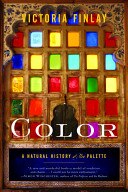
Identifying an ILBM file as HAM-E is difficult it can apparently only be done by looking for a special signature near the beginning of the pixel data. HAM-E (or HAME) is a format designed to work with particular video hardware from Black Belt Systems. PCHG - Uses a PCHG (Palette Changes) chunk.CTBL (Newtek Dynamic Ham) - Uses CTBL and DYCP chunks.There are at least three extended HAM formats designed to take advantage of the Amiga's ability to make changes to the palette in the middle of an image: HAM8 files have bit 11 of the CAMG chunk set, 8 planes (rarely 7), and 64 palette colors.

A file with no CAMG chunk, 6 bit planes, and 16 palette colors is probably HAM6. Reportedly, some HAM6 files are missing the CAMG chunk. HAM6 files have bit 11 of the CAMG chunk set, 6 planes (rarely 5), and 16 palette colors. Not that it matters much, because the real limitation is that, for each pixel, there are at most 64 or 256 available colors.

This is probably true with regard to the actual Amiga graphics modes, but some not-so-carefully-written ILBM specifications imply that more colors are possible. It is usually said that HAM6 supports up to 4096 different colors in an image, and HAM8 supports 262,144. The term HAM sometimes refers just to HAM6. There are two main kinds of HAM images: HAM6 (6 bits per pixel) and HAM8 (8 bits per pixel). Hold-and-Modify ( HAM) images are designed to work with the Amiga's oddball Hold-and-Modify graphics modes. This section describes some of the other ILBM formats. The plain ILBM format is reasonably well standardized. Some ILBM viewers try to detect this situation, and correct for it. Encoders targeting such modes would sometimes carelessly set the low (usually 4) bits to zero. This happens because, though the palette in an ILBM file always has 8 bits of precision per sample, some graphics modes did not use all 8. Some viewers appear to display some ILBM images slightly too dark. There is probably no perfect solution to this problem. For example, it may contain the reciprocal of the correct value, or it may be based on the shape of the image as a whole, instead of the shape of a pixel. Unfortunately, though this field is usually correct, it is incorrect in a significant minority of files. Fortunately, there is an "aspect ratio" field (and sometimes other fields, such as a DPI chunk), which can supply the information needed to unsquish them. Many ILBM images were designed for graphics modes having non-square pixels, so they will look squished if displayed directly on a modern computer. Many image viewers and converters don't support this feature. Some ILBM images are designed to be animated using palette color cycling, as indicated by CRNG chunks or other mechanisms. The known compression types are 0 for no compression, 1 for PackBits, and 2 for a special "vertical" RLE format (see VDAT, below). The image compression algorithm is indicated by a coded integer. Some variants formats have a "FORM type" that is something other than ILBM, such as PBM, ACBM, RGBN, or RGB8. A BMHD chunk appears somewhere in the file, usually immediately after ILBM. The file begins with the ASCII string FORM, and has a type identifier at offset 8 that is usually ILBM. When "lost" computer graphics created by Andy Warhol on an Amiga computer were discovered and converted by retrocomputing buffs at the Carnegie Mellon University Computer Club in 2013, some of them were found to be in a slight variant of the ILBM format, with a.

By most definitions of the terms, ILBM would ironically be considered to be planar, ACBM to be even more planar, and PBM to be contiguous. In ILBM jargon, they tend to mean the exact opposite of what they mean with respect to most other image formats. Be aware that terms such as interleaved, planar, and contiguous are ambiguous.


 0 kommentar(er)
0 kommentar(er)
